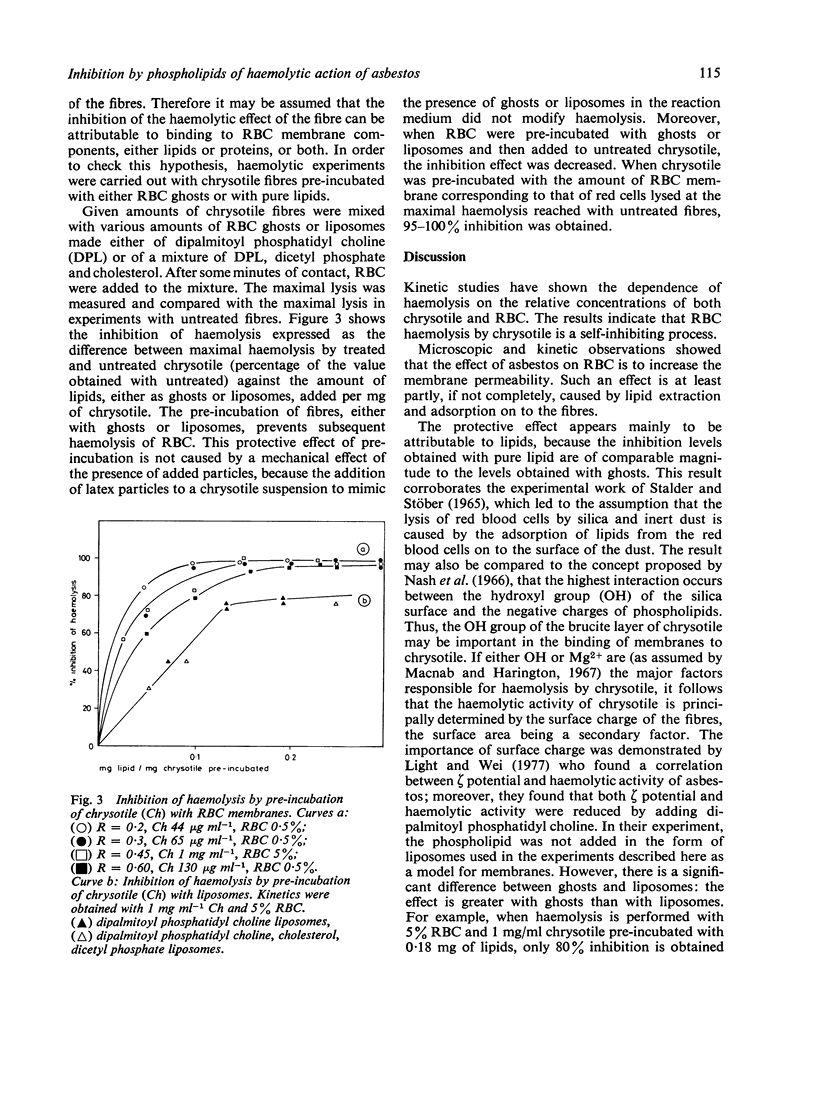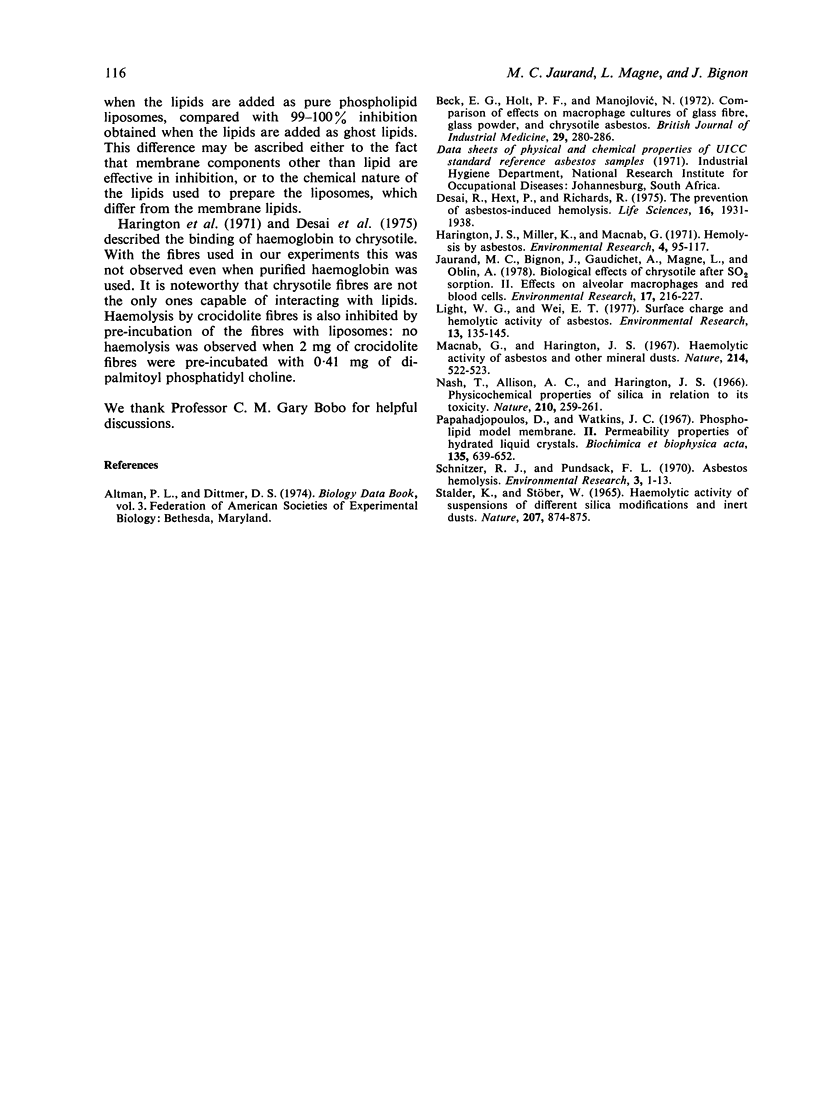Abstract
Haemolysis by asbestos fibres results from an increase in membrane permeability and not from rupture of red blood cells (RBC). The effect of chrysotile asbestos on RBC is at least partly, if not completely, attributable to lipid extraction and adsorption on to the fibres. This was suggested by the hyperbolic relationship between the haemolytic activity of chrysotile and the relative concentration of both chrysotile and RBC. Moreover, it was shown that pre-incubation of chrysotile with lipids, either as RBC membranes or with pure lipids in the form of liposomes, prevents haemolysis.
Full text
PDF



Selected References
These references are in PubMed. This may not be the complete list of references from this article.
- Beck E. G., Holt P. F., Manojlović N. Comparison of effects on macrophage cultures of glass fibre, glass powder, and chrysotile asbestos. Br J Ind Med. 1972 Jul;29(3):280–286. doi: 10.1136/oem.29.3.280. [DOI] [PMC free article] [PubMed] [Google Scholar]
- Desai R., Hext P., Richards R. The prevention of asbestos-induced hemolysis. Life Sci. 1975 Jun 15;16(12):1931–1938. doi: 10.1016/0024-3205(75)90303-3. [DOI] [PubMed] [Google Scholar]
- Harington J. S., Miller K., Macnab G. Hemolysis by asbestos. Environ Res. 1971 Apr;4(2):95–117. doi: 10.1016/0013-9351(71)90038-7. [DOI] [PubMed] [Google Scholar]
- Jaurand M. C., Bignon J., Gaudichet A., Magne L., Oblin A. Biological effects of chrysotile after SO2 sorption. II. Effects on alveolar macrophages and red blood cells. Environ Res. 1978 Oct;17(2):216–227. doi: 10.1016/0013-9351(78)90023-3. [DOI] [PubMed] [Google Scholar]
- Light W. G., Wei E. T. Surface charge and hemolytic activity of asbestos. Environ Res. 1977 Feb;13(1):135–145. doi: 10.1016/0013-9351(77)90012-3. [DOI] [PubMed] [Google Scholar]
- Macnab G., Harington J. S. Haemolytic activity of asbestos and other mineral dusts. Nature. 1967 Apr 29;214(5087):522–523. doi: 10.1038/214522a0. [DOI] [PubMed] [Google Scholar]
- Nash T., Allison A. C., Harington J. S. Physico-chemical properties of silica in relation to its toxicity. Nature. 1966 Apr 16;210(5033):259–261. doi: 10.1038/210259a0. [DOI] [PubMed] [Google Scholar]
- Papahadjopoulos D., Watkins J. C. Phospholipid model membranes. II. Permeability properties of hydrated liquid crystals. Biochim Biophys Acta. 1967 Sep 9;135(4):639–652. doi: 10.1016/0005-2736(67)90095-8. [DOI] [PubMed] [Google Scholar]
- Schnitzer R. J., Pundsack F. L. Asbestos hemolysis. Environ Res. 1970 Jan;3(1):1–13. doi: 10.1016/0013-9351(70)90056-3. [DOI] [PubMed] [Google Scholar]
- Stalder K., Stöber W. Haemolytic activity of suspensions of different silica modifications and inert dusts. Nature. 1965 Aug 21;207(999):874–875. doi: 10.1038/207874a0. [DOI] [PubMed] [Google Scholar]


